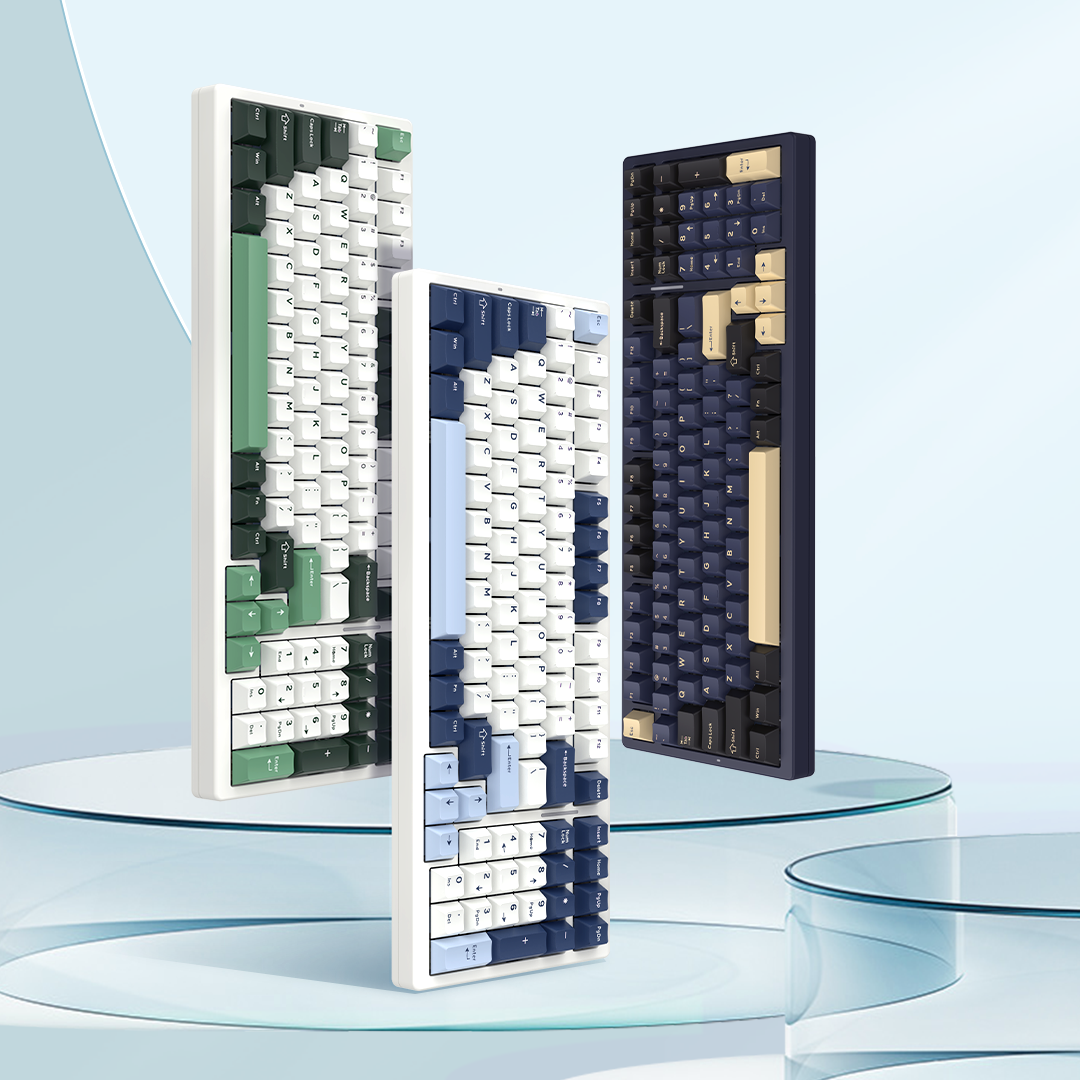Was ist eine Low-Profile-Tastatur? Alles, was Sie vor dem Kauf wissen müssen
Das Design einer Tastatur spielt eine entscheidende Rolle sowohl für den Schreibkomfort als auch für die Gaming-Performance. Von der Höhe der Tastenkappen bis hin zum Gefühl jedes Tastendrucks kann jedes Design-Detail die Geschwindigkeit, Genauigkeit und das Gesamterlebnis beeinflussen. Eine gut gestaltete Tastatur kann Müdigkeit bei langen Sitzungen reduzieren und bessere Kontrolle bei schnellem Gaming bieten.

In den letzten Jahren hat ein neuer Tastaturstil sowohl bei Gamern als auch bei Profis an Popularität gewonnen – die Low-Profile-Tastatur. Charakterisiert durch ihren schlanken Körper und die kürzere Tastenhubdistanz bietet dieses Design ein elegantes Aussehen, schnellere Aktivierung und verbesserte Ergonomie. Da immer mehr Benutzer leichte und reaktionsfreudige Setups suchen, werden Low-Profile-Tastaturen zunehmend in Betracht gezogen unter den...beste Gaming-Tastaturen, was eine moderne Alternative zu traditionellen mechanischen Konstruktionen darstellt.
Was ist eine Low-Profile-Tastatur?
Eine Low-Profile-Tastatur ist eine Tastatur, die im Vergleich zu herkömmlichen mechanischen Tastaturen einen schlankeren Körper und kürzere Tastenschalter aufweist. Der Begriff „Low Profile“ bezieht sich hauptsächlich auf die verringerte Höhe der Tastenkappen und der darunterliegenden Schalter. Dieses Design führt zu einer insgesamt dünneren Bauweise, die oft dem schlichten Stil von Laptop-Tastaturen ähnelt, aber mit der verbesserten Leistung mechanischer Schalter.
Im Gegensatz zu Standard-Tastaturen, die höhere Tasten und einen größeren Tastenhub haben, zeichnen sich Low-Profile-Modelle durch kürzere Auslösewege aus – das bedeutet, dass jede Taste einen Druck schneller und mit weniger Aufwand registriert. Dies macht das Tippen nicht nur leichter und schneller, sondern hilft auch, Belastungen des Handgelenks zu reduzieren, da eine natürlichere Handposition ermöglicht wird.

Kurz gesagt, bietet eine Low-Profile-Tastatur ein Gleichgewicht zwischen Portabilität, Komfort und Leistung. Sie bietet die befriedigende Präzision einerbeste mechanische Tastaturbei gleichzeitiger Bewahrung eines minimalistischen, modernen Erscheinungsbilds, das sich perfekt in professionelle und Gaming-Setups einfügt.
Hauptmerkmale und Vorteile von Low-Profile-Tastaturen
Low-Profile-Tastaturen vereinen schlichtes Design, ergonomischen Komfort und reaktionsfreudige Leistung in einer kompakten Bauweise. Ihr charakteristisches Merkmal ist das flache Profil – sowohl die Tastenkappen als auch die Schalter sind kürzer als bei herkömmlichen Tastaturen, was zu einem dünneren, leichteren Aufbau führt, der Platz spart und die Portabilität erhöht. Die kürzere Hublänge der Tasten, typischerweise etwa 1,2–2,0 mm, ermöglicht eine schnellere Betätigung und ein flüssigeres Tippen oder Spielen, wodurch jeder Tastendruck sich schnell und mühelos anfühlt.
Viele Low-Profile-Tastaturen verwenden speziell entwickelte mechanische Schalter von Marken wie Kailh, Gateron oder Cherry, die das befriedigende taktile Feedback und die Langlebigkeit von Standard-Mechanikschaltern beibehalten, aber in einer schlankeren Form. Dies macht sie ideal für Nutzer, die Präzision schätzen, ohne die Größe einer Vollhöhen-Tastatur.

Neben der Leistung bieten Tastaturen mit niedrigem Profil auch bemerkenswerte ergonomische Vorteile. Die reduzierte Höhe fördert eine natürlichere Handgelenksposition, wodurch die Belastung bei langen Gaming- oder Schreibsessions minimiert wird. Zusammen mit ihren leisen und reaktionsschnellen Tasten bieten sie ein komfortables Erlebnis, das sowohl für die Arbeit als auch für die Freizeit geeignet ist. Darüber hinaus passt ihr schlichtes, modernes Aussehen nahtlos in jede Einrichtung – von minimalistischen Büroarbeitsplätzen bis hin zu RGB-beleuchteten Gaming-Umgebungen.
Im Wesentlichen bieten Low-Profile-Tastaturen Geschwindigkeit, Komfort und Stil in einem kompakten Paket, das jeden anspricht, der Effizienz und modernes Design schätzt, ohne auf die haptische Befriedigung einerbeste mechanische Tastatur.
Niedrige Bauform mechanischer Schalter erklärt
Im Kern jeder Low-Profile-Tastatur liegt ihre wichtigste Komponente – der Low-Profile-Mechanikschalter. Diese Schalter sind speziell entwickelt, um das befriedigende Gefühl traditioneller mechanischer Tastaturen zu bieten, während sie in eine schlankere und kompaktere Form passen. Im Gegensatz zu Standardschaltern, die über höhere Stämme und einen tieferen Tastenhub verfügen, zeichnen sich Low-Profile-Schalter durch eine kürzere Auslösedistanz und eine reduzierte Gesamthöhe aus, was schnellere und reaktionsschnellere Eingaben ermöglicht.
Die meisten Low-Profile-Schalter funktionieren nach demselben Prinzip wie herkömmliche mechanische Schalter – jeder Tastendruck aktiviert einen physischen Schalter unter der Tastenkappe. Die interne Struktur ist jedoch für Geschwindigkeit und Ergonomie optimiert. Der Tastenhub beträgt typischerweise etwa 2,5 mm oder weniger, und die Auslösung erfolgt oft bei etwa 1,2 mm, was bedeutet, dass weniger Bewegung benötigt wird, um einen Druck zu registrieren. Dieses Design hilft den Benutzern, effizienter zu tippen oder zu spielen, während präzise Kontrolle erhalten bleibt.
Mehrere bekannte Schalterhersteller produzieren Low-Profile-Varianten, darunter Kailh, Gateron und Cherry. Diese gibt es in verschiedenen Typen – linear, taktil und klickend – und sie bedienen unterschiedliche Vorlieben.
Hier sind drei bekannte mechanische Tasten mit niedrigem Profil:
Cherry MX Low Profile
Einer der frühesten und vertrauenswürdigsten Niedrigprofil-Schalter.
Erhältlich in linearen, taktilen und klickenden Varianten, die ein Gleichgewicht aus Geschwindigkeit, Gefühl und Zuverlässigkeit bieten.

Kailh Choc Low Profile
Bekannt für sein ultraflaches Design und den geschmeidigen Tastendruck.
Beliebt inbeste Gaming-Tastaturenfür eine schnelle Betätigung und minimale Fingerermüdung.

Gateron Low Profile
Bietet geschmeidige Tastenanschläge mit einem weicheren taktilen Gefühl.
Häufig für seine erschwinglichen Preise und Vielseitigkeit gelobt, geeignet sowohl für Gaming als auch für das Tippen.

Kurz gesagt, bieten mechanische Tasten mit niedrigem Profil das Beste aus beiden Welten – die Reaktionsfähigkeit und Haltbarkeit mechanischer Tastaturen in Kombination mit dem schlanken, leichten Design moderner Niedrigprofiltastaturen. Sie sind darauf ausgelegt, Geschwindigkeit, Komfort und Leistung zu steigern, während sie Ihr Setup schlank und effizient halten.










